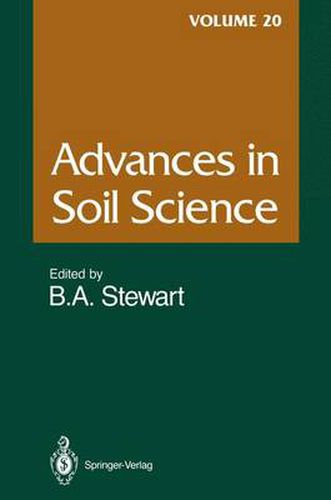Readings Newsletter
Become a Readings Member to make your shopping experience even easier.
Sign in or sign up for free!
You’re not far away from qualifying for FREE standard shipping within Australia
You’ve qualified for FREE standard shipping within Australia
The cart is loading…






This title is printed to order. This book may have been self-published. If so, we cannot guarantee the quality of the content. In the main most books will have gone through the editing process however some may not. We therefore suggest that you be aware of this before ordering this book. If in doubt check either the author or publisher’s details as we are unable to accept any returns unless they are faulty. Please contact us if you have any questions.
The key to sustaining the soil resource base is to maintain, or enhance, soil quality. Soil quality cannot be seen or measured directly from the soil alone but is inferred from soil characteristics and soil behavior under defined conditions. In essence, the quality of soils is analogous to the health of humans, and just as there is no single characteristic that can be measured to quantify a person’s health, there is no single measurement that can quantify soil quality. However, there are certain characteristics, particularly when considered together, that are good indicators. Soil quality, just as human health, can be maintained or enhanced by good management practices; and seriously degraded-sometimes irrevers ibly-with poor practices. Soil quality is also important because it has direct and indirect effects on air quality and water quality. While the enhancement of soil quality does not always assure parallel improvements in the quality of air and, particularly, water resources, this is often the case. However, soil deg radation is invariably accompanied by degraded qualities of both air and water resources. The consensus among many scientists is that the greatest challenge is not increasing production, but preventing serious deterioration of the soil and water resource base so that the production level can be sustained.
$9.00 standard shipping within Australia
FREE standard shipping within Australia for orders over $100.00
Express & International shipping calculated at checkout
This title is printed to order. This book may have been self-published. If so, we cannot guarantee the quality of the content. In the main most books will have gone through the editing process however some may not. We therefore suggest that you be aware of this before ordering this book. If in doubt check either the author or publisher’s details as we are unable to accept any returns unless they are faulty. Please contact us if you have any questions.
The key to sustaining the soil resource base is to maintain, or enhance, soil quality. Soil quality cannot be seen or measured directly from the soil alone but is inferred from soil characteristics and soil behavior under defined conditions. In essence, the quality of soils is analogous to the health of humans, and just as there is no single characteristic that can be measured to quantify a person’s health, there is no single measurement that can quantify soil quality. However, there are certain characteristics, particularly when considered together, that are good indicators. Soil quality, just as human health, can be maintained or enhanced by good management practices; and seriously degraded-sometimes irrevers ibly-with poor practices. Soil quality is also important because it has direct and indirect effects on air quality and water quality. While the enhancement of soil quality does not always assure parallel improvements in the quality of air and, particularly, water resources, this is often the case. However, soil deg radation is invariably accompanied by degraded qualities of both air and water resources. The consensus among many scientists is that the greatest challenge is not increasing production, but preventing serious deterioration of the soil and water resource base so that the production level can be sustained.